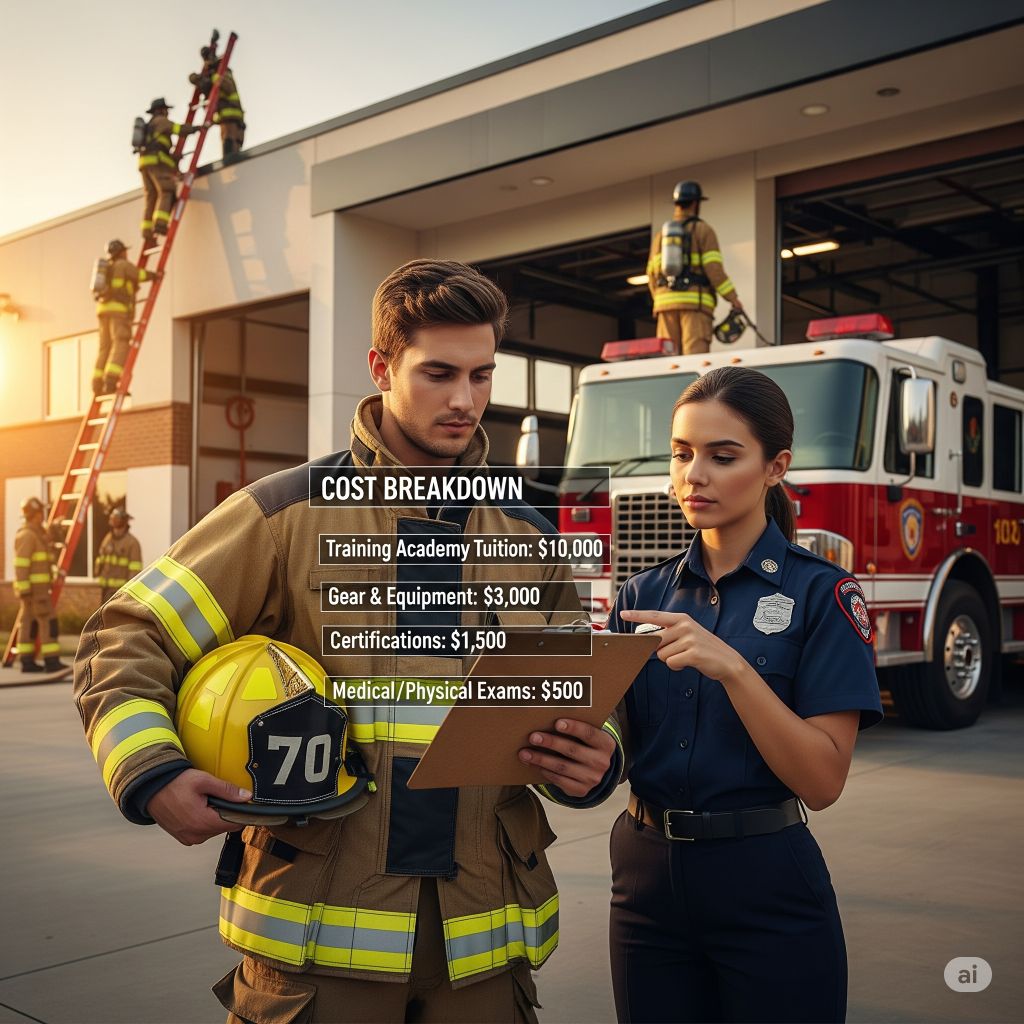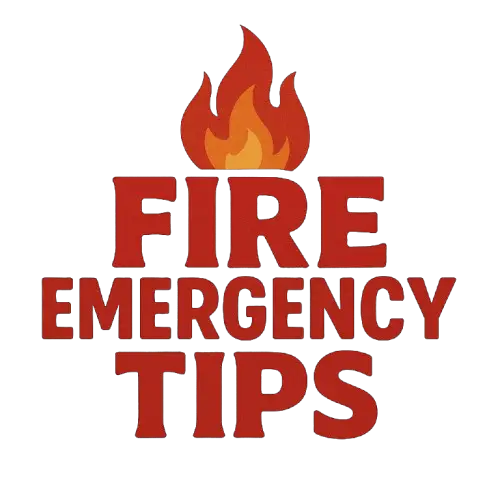
Becoming a firefighter is a noble calling—but before stepping into a firehouse, you’ll have to invest in training, certifications, and gear. While many envision the job as all grit and bravery, few realize the financial costs of joining the fire service—especially at the entry level.
This guide breaks down how much it costs to become a firefighter in the U.S., covering expenses such as EMT certification, fire academy tuition, equipment, background checks, and ongoing certifications. We also provide a detailed chart at the end for quick reference.
Why Does It Cost Money to Become a Firefighter?
Firefighting is a highly skilled profession. Departments want applicants who are certified, physically fit, and trained before they even apply. In many areas, becoming a firefighter means investing in your own education and equipment up front—particularly for entry-level and volunteer positions.
While some departments offer paid fire academies, many aspiring firefighters must complete basic certifications on their own time and dime.
Key Costs in Becoming a Firefighter
Let’s break down the major costs you’ll encounter:
1. EMT or Paramedic Certification
Estimated Cost: $800 – $15,000+
Most fire departments require applicants to be certified as an EMT (Emergency Medical Technician)—and in larger cities, a Paramedic license may be preferred or required.
| Level | Duration | Typical Cost |
|---|---|---|
| EMT-Basic | 3–6 months | $800 – $2,000 |
| EMT-Intermediate | 6–12 months | $2,000 – $5,000 |
| Paramedic | 1–2 years | $5,000 – $15,000+ |
Additional EMT Costs:
- Textbooks: $100–$200
- Uniforms: $50–$150
- Clinical fees (hospitals/ambulance ride-alongs): $100–$300
- National Registry Exam Fee: $104
2. Fire Academy Tuition
Estimated Cost: $1,500 – $8,000
Some states have regional fire academies where civilians can enroll before applying to departments. Others offer “in-house” fire academies, which are paid and only open to already-hired recruits.
Fire academy topics include:
- Fire behavior
- Rescue techniques
- Hazardous materials
- Fire suppression systems
- Wildland firefighting
Additional Fire Academy Costs:
- Bunker gear (if not provided): $2,000 – $3,500
- Textbooks and manuals: $200 – $500
- CPR/First Aid Certification: $50 – $100
- State exam or Firefighter I/II certification fees: $100 – $300
3. Physical Fitness Exams and Preparation
Estimated Cost: $50 – $500
Most departments require passing a Candidate Physical Ability Test (CPAT) or an equivalent. This includes tasks like stair climbing, hose dragging, and forcible entry simulations.
- CPAT testing fee: $125 – $150
- CPAT practice sessions (optional but recommended): $25 – $75/session
- Gym membership or personal training (6–12 months): $300 – $1,000+
4. Background Check, Fingerprinting, and Drug Screening
Estimated Cost: $100 – $300
You’ll likely undergo:
- Criminal background check
- Fingerprinting (Live Scan or manual)
- Drug testing
- Driving record check
Some departments cover this after hiring, but pre-academy candidates may need to pay upfront.
5. Fire Science Degree (Optional)
Estimated Cost: $2,000 – $25,000+
Although not required, some candidates pursue an Associate’s or Bachelor’s degree in Fire Science or Emergency Management to improve hiring odds and career advancement.
- Community College: $2,000 – $8,000 total
- University/Online programs: $10,000 – $25,000+
6. Application and Exam Fees
Estimated Cost: $25 – $100 per department
Each department may charge application or entrance exam fees. Testing through third-party vendors like National Testing Network (NTN) may include additional costs.
- Entrance exam: $40 – $60
- Application processing fee: $25 – $50
- NTN testing package: $50 – $85
7. Volunteer or Reserve Programs (Optional Path)
Some departments allow new candidates to join as volunteers or reserves, often covering training costs. However, you’ll likely need to cover gear, gas, and possibly EMT certification on your own.
Out-of-pocket for volunteers:
- EMT: $800–$2,000
- Gear: May be loaned or reimbursed
- Travel: Variable
8. Ongoing Certification and Renewal
Estimated Annual Cost: $100 – $500
After becoming a firefighter, you’ll need to maintain certifications like:
- EMT/Paramedic license renewal (every 2–3 years)
- CPR renewal (annually or biannually)
- Hazmat awareness
- Continuing education (CEUs)
✅ Total Estimated Out-of-Pocket Cost: $4,000 – $20,000+
The total depends on your location, whether you’re pursuing EMT vs. paramedic, if you pay for your own academy, and if you go for optional degrees.
Certification and Training Cost Chart
| Item | Estimated Cost Range |
|---|---|
| EMT-Basic Course | $800 – $2,000 |
| EMT Textbooks & Uniforms | $150 – $300 |
| Paramedic Course (Optional) | $5,000 – $15,000+ |
| National Registry Exam (EMT) | $104 |
| Fire Academy Tuition | $1,500 – $8,000 |
| Bunker Gear (if not provided) | $2,000 – $3,500 |
| CPAT Test and Practice | $125 – $300 |
| Background Checks & Drug Test | $100 – $300 |
| Application/Testing Fees (per dept) | $25 – $100 |
| CPR/First Aid Certification | $50 – $100 |
| Fire Science Degree (Optional) | $2,000 – $25,000 |
| Ongoing Certification Renewal | $100 – $500/year |
How to Offset the Costs
- Department Sponsorships: Some fire departments pay for your academy or EMT training after hiring you.
- Financial Aid: Community colleges often offer grants or scholarships.
- GI Bill (for Veterans): Covers EMT and fire training at accredited institutions.
- Workforce Development Programs: State or county-level funding for first responder training.
- Volunteer Programs: May include free fire training in exchange for service hours.
Is the Investment Worth It?
While the cost of becoming a firefighter can be steep, the career benefits are significant:
- Starting salaries typically range from $40,000 to $60,000/year, with senior firefighters or engineers making $80,000+.
- Generous retirement and health benefits
- Job stability and advancement opportunities (captain, battalion chief, investigator)
- Personal satisfaction and community impact
Final Thoughts
Becoming a firefighter isn’t just a physical and emotional challenge—it’s also a financial investment. From EMT certification to academy fees, the total cost to get started can range from $4,000 to over $20,000.
Becoming a firefighter involves more than just the initial exam costs. Additional certification fees for EMT Paramedic, Firefighter I and II, Hazmat, Wildland Firefighter, and Fire Officer are essential investments in enhancing skills and advancing in the firefighting field. Budgeting for these certifications is crucial for success in this profession. By understanding the financial commitments required beyond the basic exam fees, aspiring firefighters can better prepare themselves for a rewarding career in firefighting.
Frequently Asked Questions
Are additional certification fees necessary for aspiring firefighters?
Yes, additional certification fees are essential as they cover certifications like EMT Paramedic ($1,200 to $2,000), Firefighter I and II ($500 to $1,000), Hazmat ($200 to $400), Wildland Firefighter ($300 to $500), and Fire Officer ($400 to $800). These certifications boost skills, career prospects, and competitiveness in the field.
